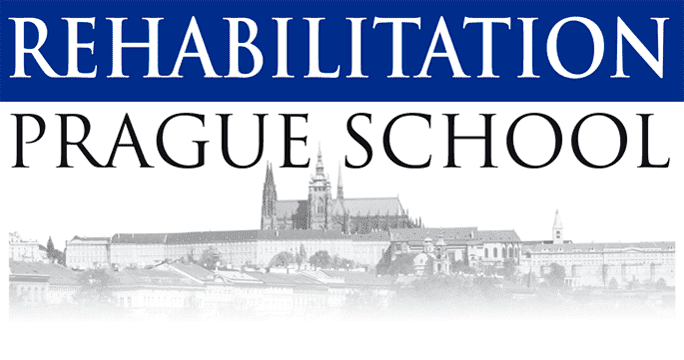August 14, 2023

A group of neurologists and other specialists in Prague was since the early 1950s researching and developing new approaches to avoid what harms him. The patient must always leave your office with homework. 1)
The Prague School promoted a synergy of clinical approach and radiology for better diagnostics, and manual therapy with an emphasis on patient’s moto musculoskeletal rehabilitation, not the structural pathology (inflammation or herniated disc). Muscle strength is not as important as coordinated movement. (Vladimír Janda: Muscle strength is not as important as coordinated movement.)
They worried that the technical progress in medicine led to you.)1)
The founding fathers and “stars” of the Prague School of Rehabilitation were neurologists and physical therapists Vladimír Janda – who first noted the upper and lower cross moto the Prague School’s excellent professional reputation.
The new rehabilitation techniques and methods introduced by the Prague School are still recognized, adopted and further developed by rehabilitation practitioners around the world treating a variety of motors and developed his method Dynamic Neuromuscular Stabilization (DNS). One of many talented students of Václav Vojta, Jarmila Čápová developed her method
Basal Postural Programs (BPP).
Prague School Founding Fathers: Karel Lewit, Vladimír Janda, and Václav Vojta
Prague School Legacy in the Czech Republic: Pavel Kolář and Jarmila Čápová
1. www.dns-cz.com/prazska-skola
2. Procházka, Miroslav, MD.; Sbohem pane profesore (vzpomínka na neurologa Karla Lewita). Roš chodeš, Věstník židovských náboženských obcí v českých zemích a na Slovensku. 11 2014, roč. 76, čís. 5775, s. 13. ISSN 68 121074 68. https://cs.wikipedia.org/wiki/Ro%C5%A1_chode%C5%A1
Dr. Lev Kalika is a world-recognized expert in musculoskeletal medicine. with 20+ years of clinical experience in diagnostic musculoskeletal ultrasonography, rehabilitative sports medicine and conservative orthopedics. In addition to operating his clinical practice in Manhattan, he regularly publishes peer-reviewed research on ultrasound-guided therapies and procedures. He serves as a peer reviewer for Springer Nature.
Dr. Kalika is an esteemed member of multiple professional organizations, including: